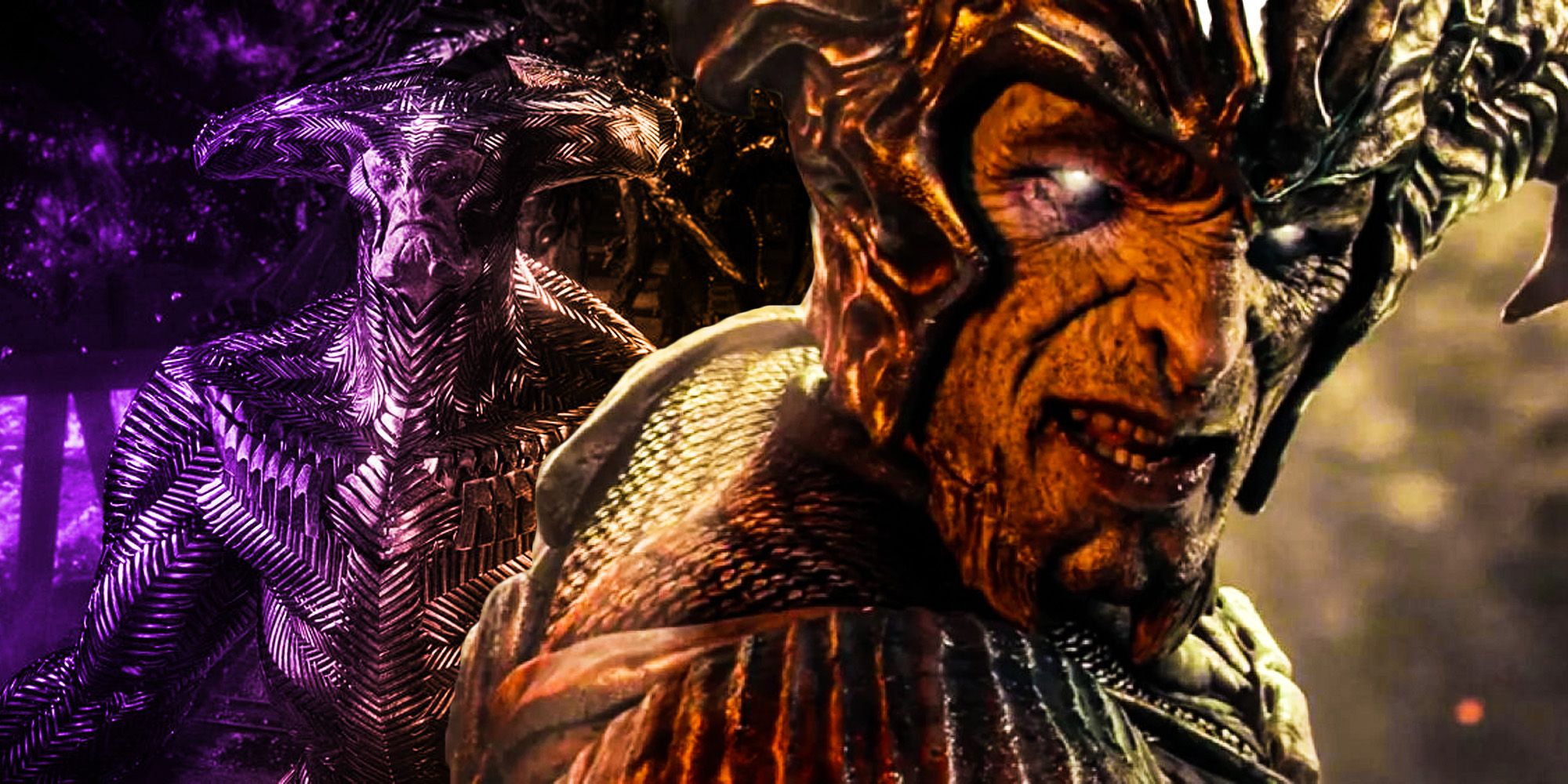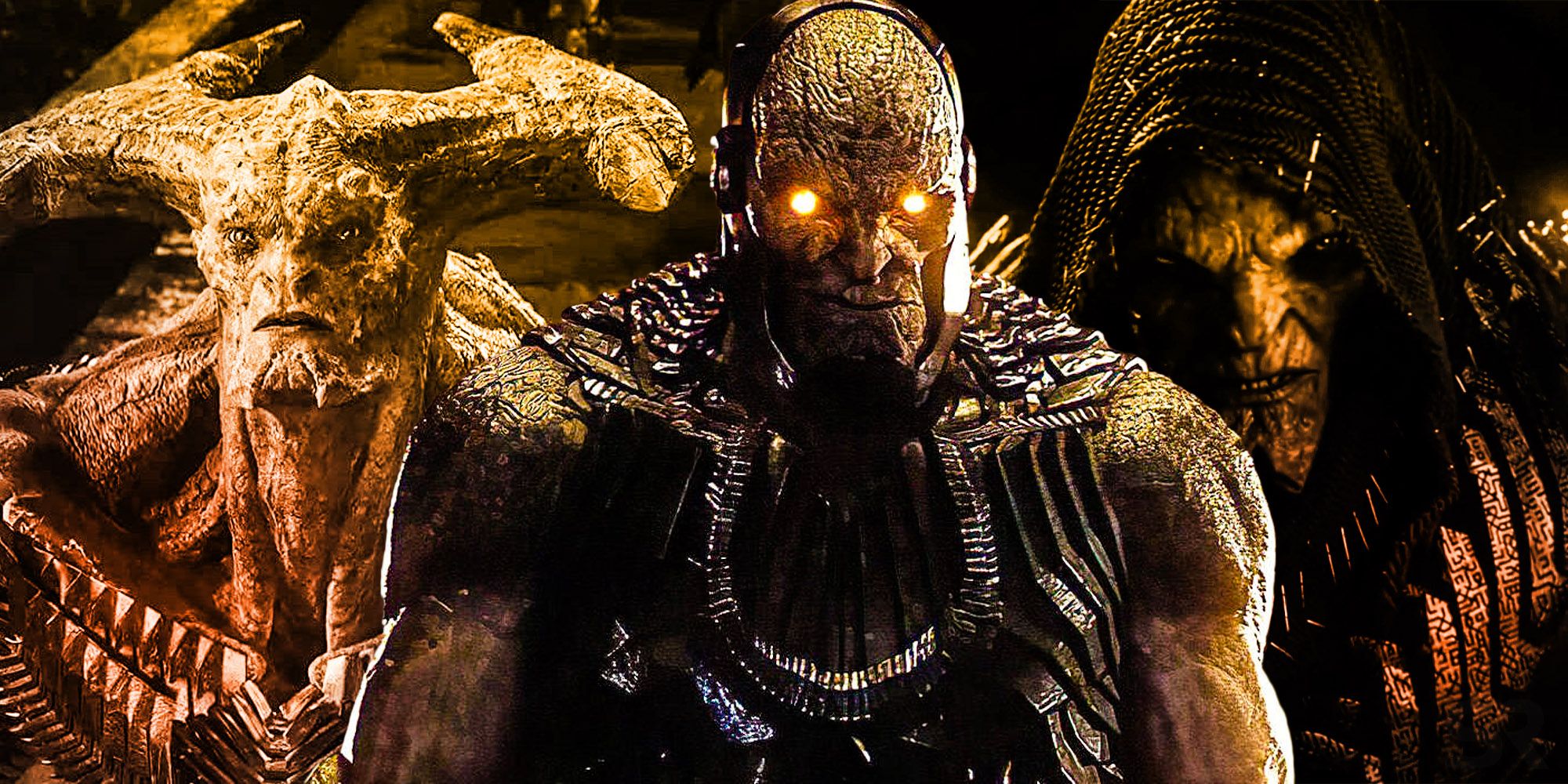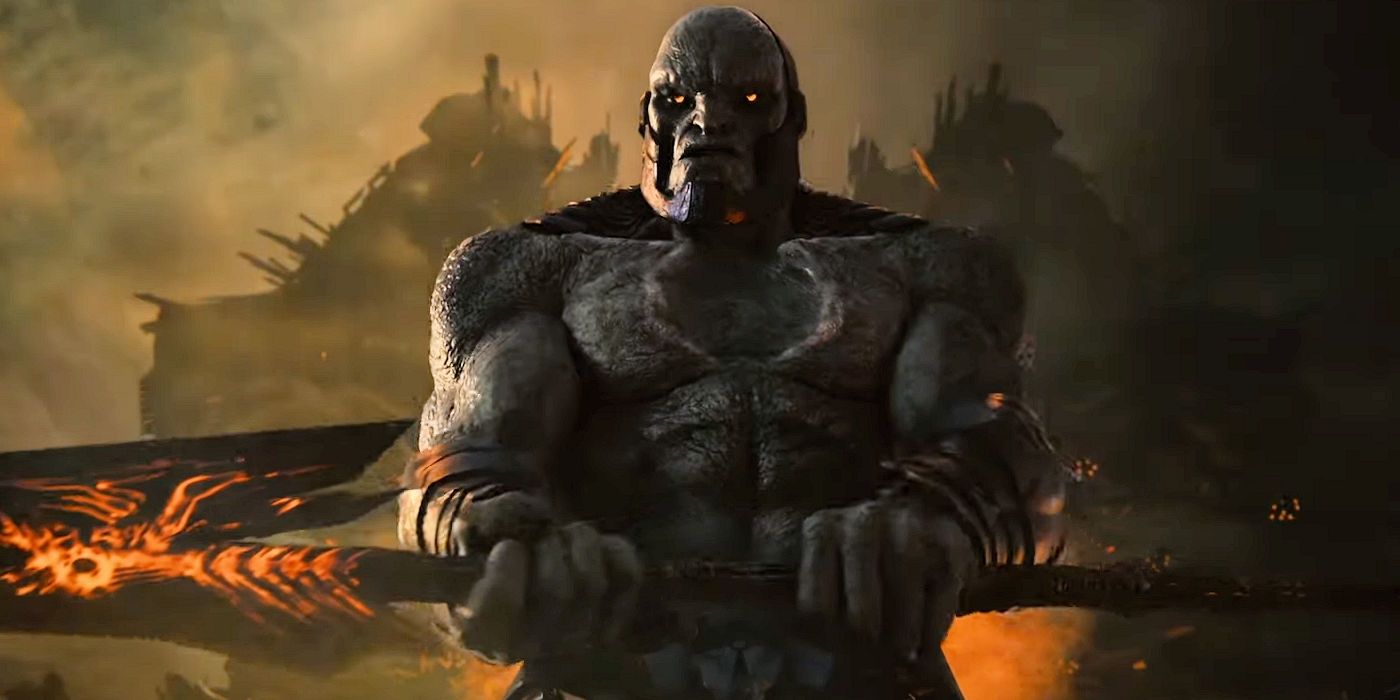
Zack Snyder’s Justice League makes some major improvements to the 2017 theatrical cut of the film, including a much better version of the main villain, Steppenwolf. Though still the big bad in the original movie, Steppenwolf had very little in the way of proper development or motivation and was heavily criticized as a weak villain. In the Snyder Cut, however, Steppenwolf has been majorly changed for the better.
The Snyder’s cut’s significantly longer runtime allows room for fuller character arcs all around, both for the eponymous heroes and the foes they face. Cyborg’s story is almost completely different (and notably improved), Flash’s powers and role in the film are more thoroughly set up, and the impact of the death and revival of Superman is effectively conveyed. Snyder’s Justice League also does a much better job of explaining the villains and their plan to conquer Earth.
As the leader of the Apokolips forces on Earth in Justice League, Steppenwolf is at the heart of that plan. Little more than a CGI monster in the 2017 theatrical cut, the villainous conqueror is turned into a proper character in the Snyder Cut with a decent amount of complexity. Here’s why the new version of Steppenwolf is so much better than the one in the Justice League theatrical cut.

In both the comics and the DCEU, Steppenwolf hails from Apokolips, the dark alien world ruled by Darkseid. Comics Steppenwolf is the uncle of Darkseid – original name Uxas – and sister to his mother, Heggra. Darkseid betrayed both his mother and his older brother Drax to seize the throne of Apokolips, having already taken control of the mystical Omega Force, which granted him immense power and turned his skin to stone.
Because only some of Zack Snyder’s Darkseid story ever came to fruition, it’s hard to say exactly how accurate it would have been to the comics. In the Snyder Cut of Justice League, however, there’s a lot more elaboration on Steppenwolf’s relationship with and subservience to Darkseid. DeSaad references a betrayal Steppenwolf committed against Darkseid, which is why he was sent away from Apokolips and forced to conquer other worlds as penance. Since Steppenwolf is Heggra’s brother, and since Darkseid killed Heggra, it’s most likely that Steppenwolf opposed his nephew’s rule at some point and may have even fought against him. Clearly, that opposition didn’t end well for Steppenwolf.
Steppenwolf’s fall from grace gives a far more compelling foundation to his character than he ever received in the Justice League theatrical cut. The original film entirely removed Darkseid from the story and made Steppenwolf appear to be the main villain, which didn’t work. His motivations were unclear, and he wasn’t at all intimidating. His backstory with Darkseid adds lots more dimension to his arc because it gives him something to lose. The audience understands why Steppenwolf has come to Earth, and why he is so curt and brutal in his conquest. To him, Earth is not a prize – it’s just one more task in a long road to redemption.

Zack Snyder’s Justice League gives Steppenwolf proper motivation, but it also makes him far more intimidating than the film’s theatrical cut. This is accomplished largely through the new version’s altered dialogue and fight scenes, which show Steppenwolf’s easy victories against the Amazons and the Atlanteans in detail. These battles were part of the original film, but they were severely undercut by poor writing and lazy design for Steppenwolf.
Take the battle of Themyscira. In the original cut, Steppenwolf appears in generic battle garb, briefly worships the Mother Box in a baffling bit of dialogue, and then immediately starts letting loose with sadistic grins and evil one-liners. Though much of the fight is the same as in the Snyder Cut, Steppenwolf holds no presence on screen. By contrast, the Snyder Cut introduces a far more imposing Steppenwolf. His new look, while a bit silly in still images, works in motion, and immediately establishes his alien origin. His lines aren’t glib, but tired. He comes off as a desperate, exhausted man – someone who is efficient in destruction, but who takes no pleasure in it. It’s a completely different character and one who demands far more attention from his first few minutes on screen.
It also helps that Steppenwolf’s plan is actually explained properly in Zack Snyder’s Justice League. The Mother Boxes aren’t introduced in a way that makes sense in the theatrical cut, and since Darkseid is removed entirely from the story, it’s never really explained why the audience is supposed to care about Steppenwolf’s plan. It’s understood that he wants to end the world, but only in a vague, unengaging way. He doesn’t have a reason to care, so the audience doesn’t either. His story has no stakes. The Snyder Cut fixes these issues by properly showing Steppenwolf’s role in the story, fully explaining what the Mother Boxes are, and building up the rest of the Apokolips lore with Darkseid and DeSaad.

When Zack Snyder left the original production of Justice League, the script changes that took place under Joss Whedon effectively combined the characters of Steppenwolf and Darkseid into one. Steppenwolf was changed into the main conqueror, rather than the king’s general. His lines changed, his look changed, and he was pitched as the ultimate threat to Earth. The problem was that Steppenwolf was never meant to be the true lead villain. His entire mission on Earth is a recompense for his crimes against Darkseid, and without that extra layer, he comes off feeling completely flat.
Loki worked as the main villain of the first Avengers movie because his motivations had nothing to do with Thanos. Yes, the Mad Titan provided the army for the attack on Earth, but he had nothing to do with Loki’s own quest for power. That’s not the case in Justice League, as everything Steppenwolf does is connected to his relationship with Darkseid. Steppenwolf is a zealot; a prophet preparing the way for his master. When that status is restored in the Snyder Cut, the character makes a lot more sense.
Steppenwolf’s secondary status actually makes the entire plot of Justice League a lot more cohesive. It’s understood from the start that he wouldn’t be a match for Superman, but he’s more than a match for the rest of the team. When Superman returns in the climax of the theatrical cut, his quick defeat of Steppenwolf feels too easy given his status as the film’s main villain. However, it makes far more sense when Steppenwolf isn’t positioned as the ultimate threat. It takes everything the Justice League has just to beat Steppenwolf, which builds up Darkseid as a truly terrifying villain since he’s known to be even stronger. Sadly, the payoff for that Darkseid buildup may never arrive, as a sequel to Zack Snyder’s Justice League remains highly unlikely.
https://ift.tt/30Wl0xE
March 20, 2021 at 06:30AM




